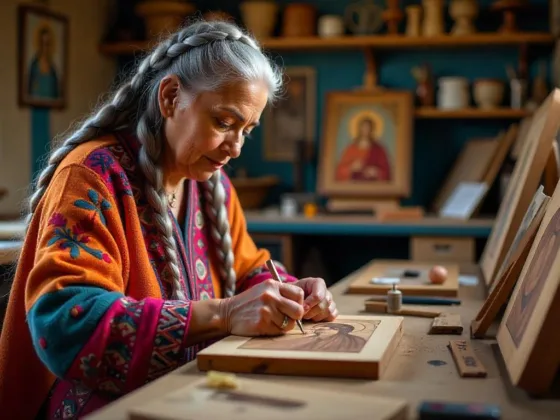Table of Contents Show
If you’ve got a vaulted ceiling and no attic, you might be wondering how to keep your home cozy without the usual space for insulation. Don’t worry! Insulating a vaulted ceiling can still be done effectively.
In this guide, we’ll walk through the reasons why insulation is important, the challenges you might face, and the best types of insulation to use. Plus, we’ll give you a step-by-step approach to get the job done right. Let’s get started!
Key Takeaways
- Understanding vaulted ceilings is key to effective insulation.
- Insulating your ceiling helps maintain temperature and reduce energy costs.
- Limited access can make insulation tricky, but there are solutions.
- Different insulation types offer various benefits for vaulted ceilings.
- Follow a step-by-step guide to ensure a successful insulation project.
Understanding Vaulted Ceilings
Vaulted ceilings, those dramatic, angled ceilings that add a touch of architectural flair to a home, are definitely eye-catching. But they can also present some unique challenges, especially when it comes to insulation.
Unlike standard flat ceilings with an accessible attic above, vaulted ceilings often follow the roofline directly, leaving little to no room for traditional insulation methods. This means you’ve gotta get creative to keep your home comfortable and energy-efficient.
Limited Access and Space Constraints
One of the biggest hurdles with vaulted ceilings is, well, getting to them! Since they often lack an attic space, access is limited. This makes installing insulation a bit trickier than just rolling out batts in an attic.
Space is also a major factor. The cavity between the ceiling and the roof might be shallow, restricting the type and amount of insulation you can use. You can’t just cram a bunch of stuff in there and hope for the best; you need to consider the available space and choose an insulation material for vaulted ceilings that fits properly.
Potential for Moisture Issues
Moisture can be a real enemy when it comes to vaulted ceilings. Without proper insulation and ventilation, warm, moist air from inside your home can rise and condense on the cold roof deck. This can lead to a whole host of problems, including:
- Mold and mildew growth
- Wood rot
- Damaged drywall
It’s super important to create a good vapor barrier and ensure adequate ventilation to prevent moisture buildup. Ignoring this can lead to costly repairs down the road. Properly installed insulation helps regulate temperature and reduce condensation, but it’s only one piece of the puzzle. You might need to consider adding vents or other moisture-control measures to keep things dry and healthy.
Why Insulate a Vaulted Ceiling?
Okay, so you’ve got a vaulted ceiling. They look awesome, right? But they can also be a major source of energy loss if they’re not properly insulated. Let’s break down why energy efficiency in vaulted ceilings is so important.
- Comfort: Nobody wants a room that’s freezing in the winter and sweltering in the summer. Proper insulation helps maintain a consistent temperature, making your living space way more comfortable.
- Lower Energy Bills: This is a big one. A poorly insulated vaulted ceiling can lead to significant heat loss in the winter and heat gain in the summer. That means your HVAC system is working overtime, and your energy bills are through the roof. Good insulation can drastically reduce those costs.
- Preventing Moisture Problems: Temperature differences can cause condensation, which leads to mold and mildew. Insulation helps regulate the temperature, reducing the risk of moisture buildup.
Insulating your vaulted ceiling isn’t just about saving money; it’s about creating a healthier and more comfortable living environment. It’s an investment that pays off in the long run.
Challenges of Insulating Without an Attic
Okay, so you’ve got a vaulted ceiling and no attic. Sounds cool, right? Well, it can be a bit of a headache when it comes to insulation. Insulating ceilings without attic space presents some unique problems that you just don’t encounter with a traditional attic setup. It’s not impossible, but you need to be aware of the hurdles.
Limited Access and Space Constraints
This is probably the biggest issue. Without an attic, you’re working with a very confined space. You can’t just waltz in and spread out insulation like you would in an attic. You’re often stuck working within the existing ceiling cavity, which might be pretty shallow. This limits the type and amount of insulation you can use. Think about it:
- You might have to cut into the ceiling to add insulation.
- Working in tight spaces can be physically challenging.
- Getting the insulation evenly distributed is tough.
Potential for Moisture Issues
Moisture is always a concern when dealing with insulation, but it’s even more critical in vaulted ceilings without attics. Because there’s less airflow, any moisture that gets in can get trapped. This can lead to:
- Mold growth (yuck!).
- Rotting of the roof structure.
- Reduced insulation effectiveness.
It’s super important to make sure you have a proper vapor barrier in place. This helps prevent moisture from getting into the insulation in the first place. Also, consider ventilation options, even if they’re not as straightforward as with an attic. You need to give that moisture somewhere to go.
So, yeah, insulating ceilings without attic space isn’t a walk in the park, but with the right approach, you can definitely make it work. Just be prepared for some challenges along the way.
Types of Insulation Suitable for Vaulted Ceilings
Okay, so you’re ready to insulate that vaulted ceiling! But what should you use? There are a few options, each with its own pros and cons. Let’s break down some of the best materials for ceiling insulation.
Spray Foam Insulation
Spray foam is a popular choice, especially when dealing with tricky spaces. It creates an airtight seal, which is great for preventing air leaks and moisture problems.
There are two main types:
- Closed-cell foam: denser and has a higher R-value per inch, making it a good option where space is limited.
- Open-cell foam: less expensive but doesn’t insulate as well per inch.
The downside? It can be pricier than other options, but the airtight seal can really pay off in energy savings. If you’re looking to add insulation to your home, this is a great option.
Rigid Foam Board Insulation
Rigid foam boards are another solid choice. They come in sheets and can be cut to fit between the rafters. You’ll typically find them in materials like polystyrene, polyisocyanurate, or polyurethane. They offer good insulation value and can be a more budget-friendly option than spray foam. Plus, they’re relatively easy to work with if you’re a DIYer. Just make sure to seal the seams properly to prevent air leaks.
Fiberglass Batts and Blown-In Insulation
Fiberglass batts are the classic insulation choice, and blown-in fiberglass can also work in vaulted ceilings, especially if you have some cavity space to fill. They’re generally the most affordable option, but they don’t create an airtight seal like spray foam.
- Installing batts in a vaulted ceiling can be a bit tricky, as you need to ensure they stay in place.
- Blown-in fiberglass is better suited for accessible cavities, but might not be the best choice if you’re dealing with a completely closed-off vaulted ceiling.
Ultimately, the best insulation for your vaulted ceiling depends on your budget, the structure of your ceiling, and your climate. Consider all the factors before making a decision!
Step-by-Step Guide to Insulating Your Vaulted Ceiling
Assessing Your Ceiling Structure
Before you start buying insulation, it’s important to understand your vaulted ceiling and its components. Here’s what you need to do:
- Examine your ceiling: Take a close look at your vaulted ceiling and determine its materials and construction.
- Check the rafters: Measure the thickness of the rafters to understand their strength and insulation capabilities.
- Inspect existing insulation: Look for any insulation materials that may already be in place. This will help you assess if additional insulation is needed.
- Look for signs of moisture damage: Check for stains or mold on the ceiling, as these could indicate leaks or condensation problems that need to be addressed before insulating.
- Consult a structural engineer if necessary: If you’re unsure about the integrity of your ceiling, especially in older homes, it may be wise to seek advice from a structural engineer.
Understanding these factors is crucial for effectively insulating your vaulted ceiling.
Choosing the Right Insulation Material
Okay, so you’ve assessed your ceiling. Now comes the fun part: picking out the insulation! There are a few options, and each has its pros and cons.
- Spray foam is great for getting into every nook and cranny, but it can be pricey.
- Rigid foam boards are another solid choice, offering good R-value, but they require careful cutting and fitting.
- Fiberglass batts are the most budget-friendly, but they might not be the best for tight spaces.
Consider the climate you live in. If you’re in a colder area, you’ll want a higher R-value insulation. Also, think about your budget and how much you’re willing to spend. Don’t forget to factor in the cost of any tools or equipment you might need. For example, in a sunroom with R-12 insulation, upgrading to R-40 might require a specific type of insulation to maximize space and efficiency.
Installation Techniques for Optimal Results
Alright, you’ve got your insulation, and you’re ready to get to work. Before you start, make sure you have all the necessary safety gear: gloves, goggles, and a mask. Safety first, always!
- If you’re using spray foam, follow the manufacturer’s instructions carefully. It can get messy, so protect surrounding surfaces.
- With rigid foam boards, measure and cut precisely to avoid gaps. Use construction adhesive to secure them in place.
- For fiberglass batts, make sure they fit snugly between the rafters. Don’t compress them too much, or you’ll reduce their R-value.
When it comes to DIY ceiling insulation techniques, remember to seal any seams or gaps with caulk or tape to prevent air leaks. This will make a big difference in the overall effectiveness of your insulation.
And remember, if you’re not comfortable doing any of this yourself, don’t hesitate to call in a pro. Sometimes, it’s worth the extra cost to get it done right.
Wrapping It Up
So there you have it! Insulating a vaulted ceiling without an attic isn’t as scary as it sounds. With a little creativity and the right materials, you can keep your space cozy and energy-efficient. Whether you go for spray foam, rigid boards, or a mix, just make sure to seal everything up tight to avoid any drafts. It might take some elbow grease, but the comfort and savings on your energy bill will totally be worth it. Happy insulating!
Frequently Asked Questions
A vaulted ceiling is a type of ceiling that is higher than a standard ceiling and has a curved or angled shape. It makes a room feel more spacious.
Insulating your vaulted ceiling helps keep your home warm in winter and cool in summer. It can also save you money on energy bills.
Without an attic, you may have limited space to work and it can be harder to access the area. You also need to be careful about moisture buildup.
You can use spray foam insulation, rigid foam board insulation, or fiberglass batts and blown-in insulation to insulate a vaulted ceiling.
First, check the structure of your ceiling. Then, choose the right insulation material and follow proper installation techniques for the best results.
It depends on your comfort level and experience. If you’re unsure, it’s a good idea to hire a professional to ensure the job is done correctly.










